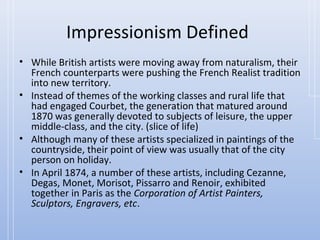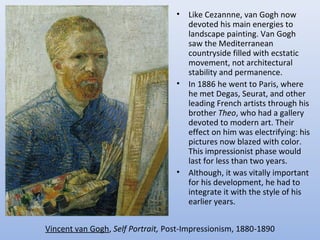The document discusses the origins and development of Impressionism in France in the late 19th century, focusing on key Impressionist artists like Monet, Renoir, Degas, and the stylistic innovations they pioneered in capturing light and color. It then examines Post-Impressionism and some of its leading practitioners such as Seurat, van Gogh, Gauguin, who moved beyond Impressionism towards more structured compositions and symbolic content. The movement towards modernism in art in reaction to academic traditions is also addressed.































